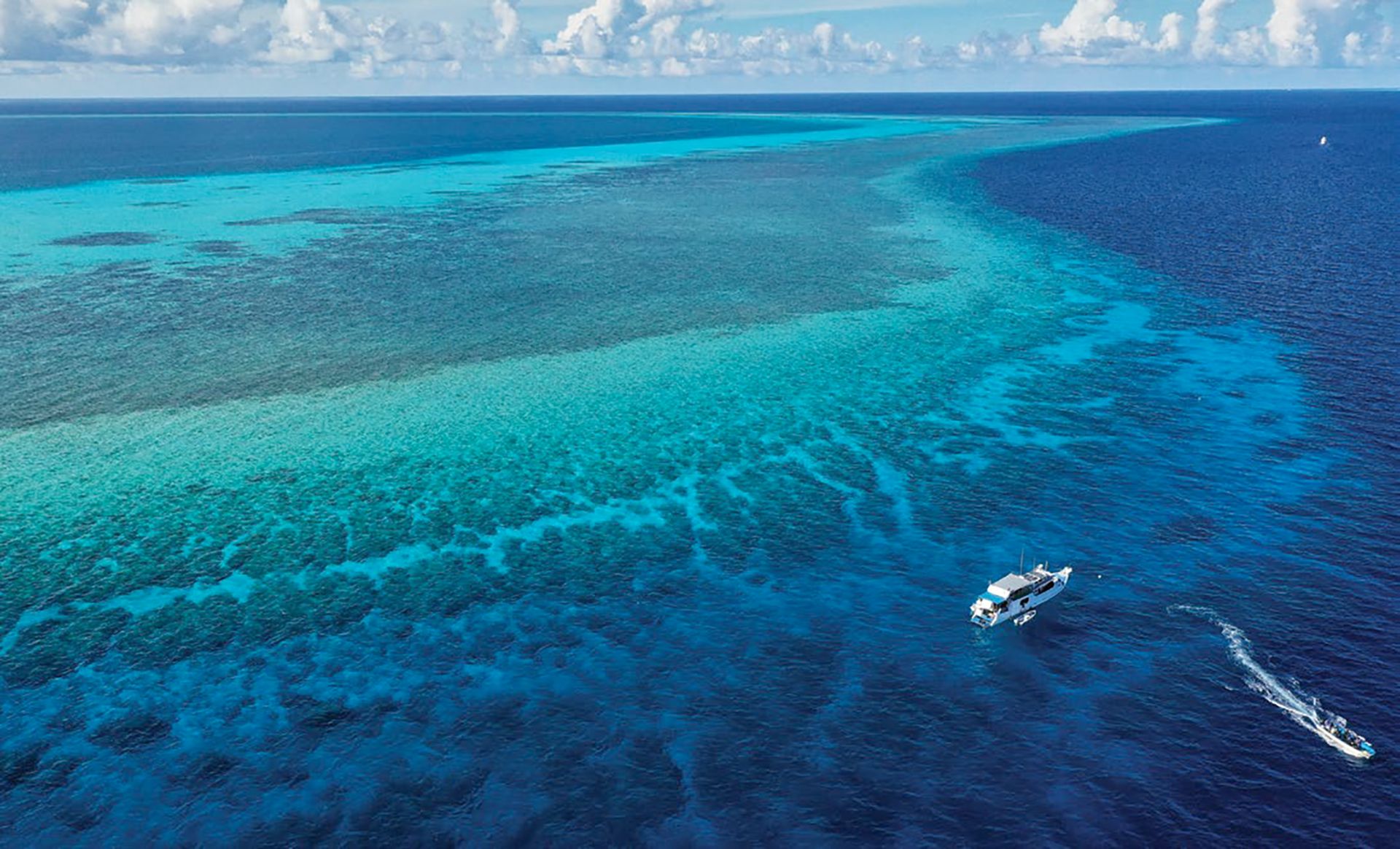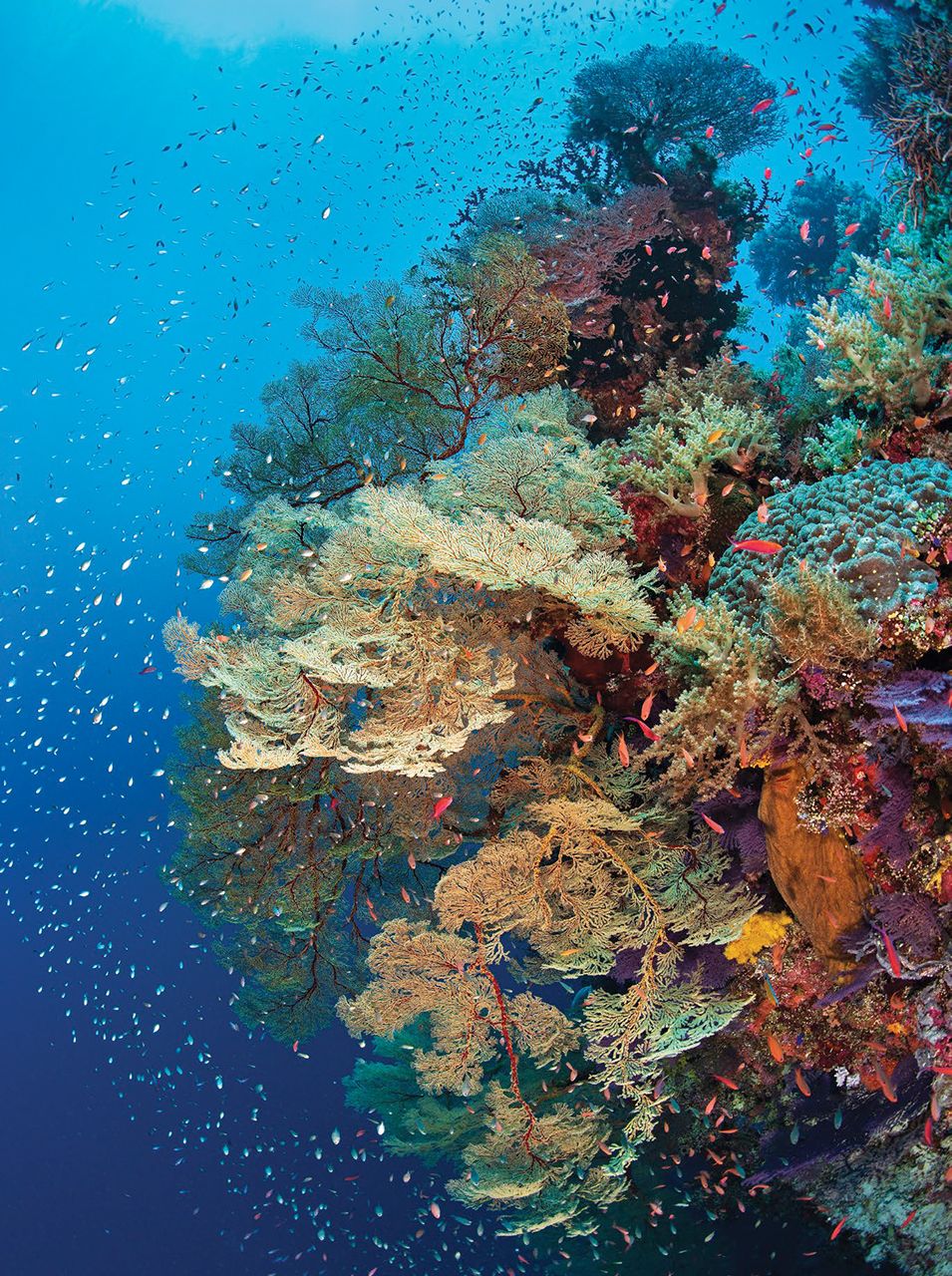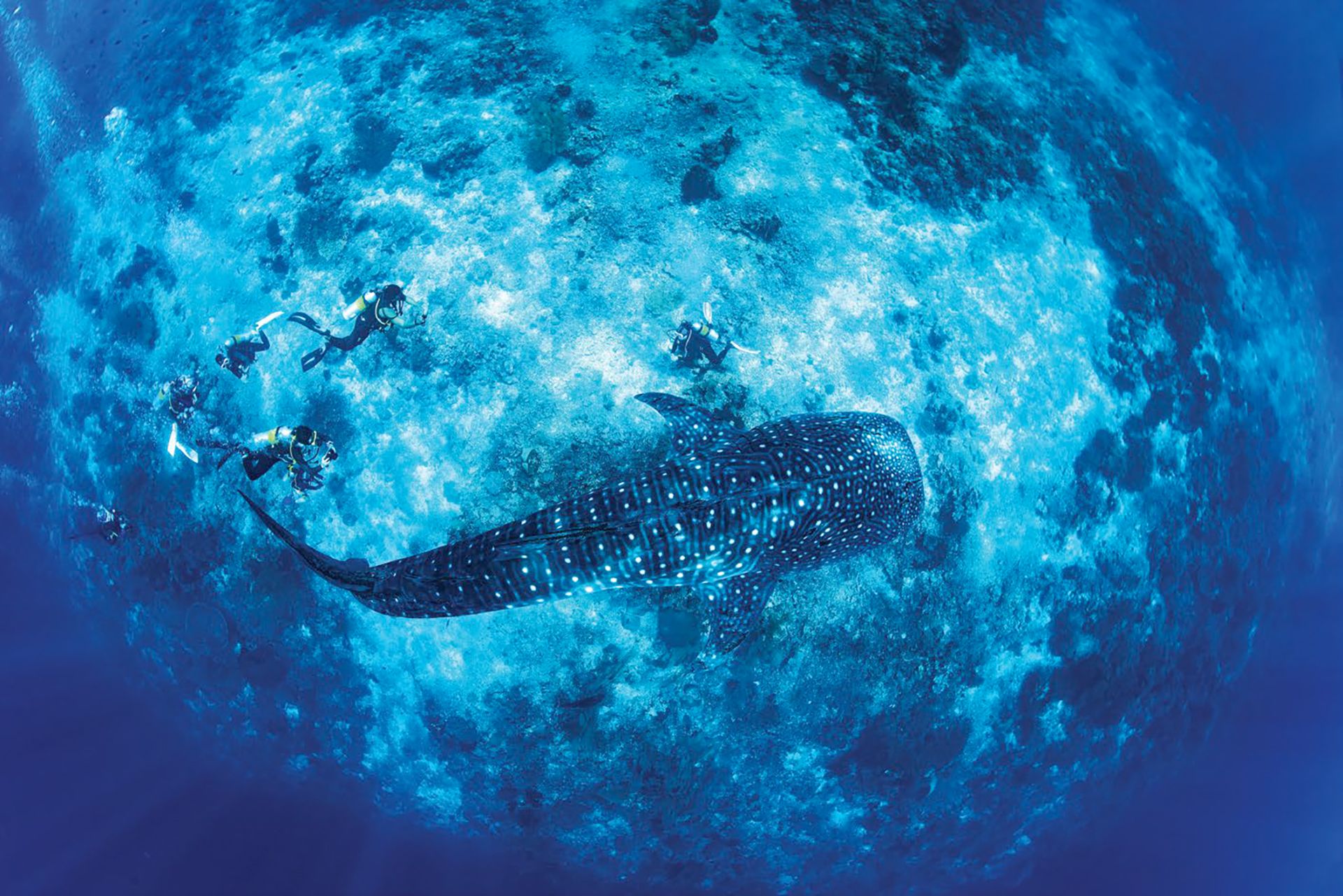Out in the vastness of Sulu Sea, Tatler explores the surreal Tubbataha Reefs, the only purely marine UNESCO World Heritage Site in Southeast Asia
Diving Tubbataha is like a vivid dream. You jump into the water, expecting to see the vibrant marine life underneath. But for those who have been there, describing this sanctuary as such is an understatement. To many, the 97,030-hectare Tubbataha Reefs Marine Park in Cagayancillo, Palawan is an underwater wonderland that is home to 360 species of corals and the highest volume of fish known in the country. It is no ordinary diver’s paradise.
See Also: 7 Birds You Can Only See In The Philippines
“It was so clear it looked like the fish were floating in the air. You couldn’t see the water,” says Angelique Songco, who first dove in Tubbataha in 1981. Today, she is the protected area superintendent of the Tubbataha Reefs. Bell Cruzet, a professional dive instructor who has been organising dive tours for decades describes it as “unbelievable”. Robert Suntay, a marine conservation educator and an underwater filmmaker, recalls what the Nat Geo Wild TV presenter Nigel Marven had to say after they shot together some footages of the Tubbataha for the network. “Nigel told us that his trip was one of the most spectacular dive adventures of his life. Not a small compliment from one who has experienced some of the finest diving on the planet,” Suntay enthuses. HSH Prince Albert II of Monaco was also impressed by its marine biodiversity when he explored the park in 2016.

These superlatives are not an exaggeration. Nestled in the heart of the mighty Sulu Sea, the Tubbataha Reefs Natural Park covers expansive marine habitats with two atolls, a reef and a large area of deep sea. Imagine whales, sharks (including the much-feared tiger shark), turtles, Napoleon wrasse, manta rays, barracudas, groupers— name it, chances are, Tubbataha has it. “It harbours a very high number of marine life compared with other areas of its size in the world,” Songco explains. It is a perfect example of a pristine coral reef with a spectacular 100-metre perpendicular wall, extensive lagoons and coral islands. “You want to follow the wall to the bottom but there is no bottom,” she adds. The underwater photographer Tet Lara, whose works are showcased in the photo book titled Tubbataha: A National Treasure, says, “Tubbataha has the largest population of white-tip reef sharks. It is also a rookery for seabirds that breed in Bird Islet and depend on the marine life to feed its young.”
Read also: 7 Diving Spots In The Philippines That Are Now Safe To Visit





